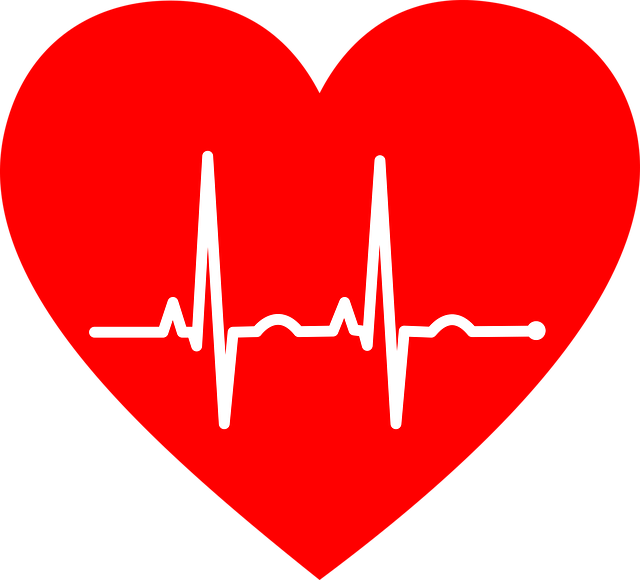
Are you creating a nursing care plan for decreased cardiac output? Or have you or a person close to you been diagnosed with it?
This guide explains the causes of decreased cardiac output, how it's diagnosed, and how it can be managed to help you understand everything you need to know about this condition.
Below is a table of contents to help you easily find the information you're looking for:
- What does decreased cardiac output mean?
- What causes decreased cardiac output?
- What are the symptoms of decreased cardiac output?
- How is decreased cardiac output assessed?
- What's the desired outcome for people with decreased cardiac output?
- What nursing interventions are done for people with decreased cardiac output?
- Summary of decreased cardiac output care plan
What Does Decreased Cardiac Output Mean?
Cardiac output is the amount of blood that the heart pumps in one minute. It's the product of heart rate (the number of heartbeats per minute) and stroke volume (the amount of blood pumped per beat), and it's usually given in a value of liters/minute. Normal cardiac output is typically between 4 and 8 liters per minute, and decreased cardiac output means the output is lower than 4 liters/minute. Cardiac output depends primarily on four factors:
- Heart rate: How fast the heart beats
- Contractility: How much the heart muscle is able to contract
- Preload: How much the ventricles stretch when the heart muscle relaxes and allows the chambers to fill with blood
- Afterload: The force the ventricles must act against to pump blood
A person with a healthy heart will pump enough blood for the body's metabolic demands. Decreased cardiac output means that there is not enough blood being pumped and distributed by the heart to meet the needs of the body.
This can be a serious problem because the body is not getting enough blood and oxygen to perform normal metabolic functions which can lead to serious health issues, including cardiac failure.
What Causes Decreased Cardiac Output?
What causes the heart to not pump enough blood? Decreased cardiac output can occur due to a variety of reasons. Cardiac output is determined by multiple factors, and pinpointing the exact cause of decreased cardiac output can sometimes be challenging. Decreased cardiac output can occur suddenly or develop slowly over time.
Seniors are more at risk of suffering from decreased cardiac output since their age puts them at a higher risk for cardiac problems in general.
There is no single most common cause, but some of the primary causes of decreased cardiac output are:
| Valvular heart disease | Chronic high or low blood pressure | Anaphylaxis (severe allergic reaction) |
| Streptococcal toxic shock syndrome (STSS) | Congenital heart defects | Poor diet |
| Kidney disease | Mitral regurgitation (backflow of blood between the two left heart chambers) | High cholesterol |
| Smoking | Diabetes | Electrolyte imbalances (such as calcium or potassium) |
| Lack of exercise | Drug use | Azotemia (high levels of nitrogen compounds in the blood) |
| Dilated cardiomyopathy (enlargement of one or more of the heart chambers) |

What Are the Symptoms of Decreased Cardiac Output?
What are the effects of decreased cardiac output? Below are the most common symptoms of decreased cardiac output, although not everyone with decreased cardiac output will suffer all these symptoms.
| Low blood pressure | Fatigue | Weakness |
| Tachycardia (fast heart rate), even when resting | Weak, irregular pulse | Rapid breathing |
| Dizziness | Confusion | Fainting |
| Chest pain | Reduced urine output | Anxiety |
| Swelling of ankles, feet, or abdomen | Weight gain | Dull-looking skin that may be cold and clammy |
| Liver enlargement |
How Is Decreased Cardiac Output Assessed?
Decreased cardiac output can only be diagnosed by a medical professional. If a patient is showing signs of decreased cardiac output, there are several ways to diagnose them. This chart shows common assessments done to check for decreased cardiac output and signs that often indicate the patient may have decreased cardiac output.
| Assessment | Signs of Decreased Cardiac Output |
| Check the pulse | Weak or irregular pulse |
| Measure heart rate | More than 60 beats per minute |
| Listen to heart sounds with a stethoscope | Heartbeats will often sound soft and weak; heart may also sound irregular |
| Note respiratory rate, rhythm and breathing sounds | Quick, shallow breathing, may struggle to catch their breath |
| Check blood pressure | Low blood pressure |
| Assess the skin's appearance and temperature | Cold, clammy, or pale skin |
| Record urine output and how often the patient urinates | Low urine output, often <30 ml/hour |
| Check for chest pain | Chest pain often present |
| Take a chest x-ray | X-ray images may show fluid buildup in the lungs or an enlarged heart |
| Order an echocardiogram test | Heart may be enlarged, pumping faster than normal, and/or not filling properly |
| Inquire about fatigue or weakness | Often experience fatigue and tiredness |
| Measure oxygen saturation with pulse oximetry | Changes in oxygen saturation is an early sign of decreased cardiac output |
| Inspect for fluid retention or weight gain | Often retain fluid in extremities and/or experience weight gain |
What's the Desired Outcome for People With Decreased Cardiac Output?
Depending on the patient and the underlying causes of decreased cardiac output, there are different desired outcomes for controlling and managing the condition. For some people, their cardiac output can be returned to a normal, healthy level, while for others the issue is chronic and they will need to make lifestyle changes in order to manage their decreased cardiac output.
Evidence of improved cardiac output includes:
- Blood pressure within a normal range for the patient
- Pulse steady and within 60-100 beats per minute
- Breathing is unlabored
- Urine output at least 30 ml/hour
- Patient feels less weak and fatigued
- No dizziness or confusion
- Skin is warm and usual color
Not all patients may be able to meet these desired outcomes though. In order to reach the desired outcome, different nursing care plans for decreased cardiac output may be implemented, and these are explained in the next section.

What Are Nursing Interventions for Patients With Decreased Cardiac Output?
A decreased cardiac output care plan will only be recommended and put in place after a thorough medical assessment has been conducted.
Common nursing interventions for decreased cardiac output include:
- Provide supplemental oxygen (if needed)
- Monitor fluid intake, including IVs if necessary
- Monitor the patient's heart rate
- Monitor blood pressure
- Record heart sounds
- Record pulse
- Assess skin appearance and temperature (for paleness, blue color, clamminess etc.)
Some long-term lifestyle changes may be implemented as part of a decreased cardiac output care plan. A medical professional may instruct the patient to:
- Reduce sodium intake (typically < 2000mg a day)
- Reduce caloric intake to lose excess fat and maintain a healthier weight
- Reduce overall fat consumption to lower lipid levels
- Increase, decrease, or alter exercise activity in order to maintain strength but not overwork the heart
Summary: Nursing Care Plan for Decreased Cardiac Output
Decreased cardiac output is an often-serious medical condition that occurs when the heart does not pump enough blood to meet the needs of the body. It can be caused by multiple factors, some of which include heart disease, congenital heart defects, and low blood pressure. People with decreased cardiac output often have weak and irregular pulses, a rapid heart rate, reduced urine output, and skin that is cold, pale, or dull-looking. They may also feel tired, weak, and dizzy.
In order to determine if a patient has decreased cardiac output, a medical professional may check the patient's pulse, monitor their heart rate, check their blood pressure, and listen to the heart with a stethoscope, among other assessments.
The nursing care plan for decreased cardiac output will be tailored to each patient, and it may include monitoring the patient's heart rate, blood pressure, and fluid intake. The patient may also be recommended to make lifestyle changes such as reducing sodium intake and cutting back calories.









